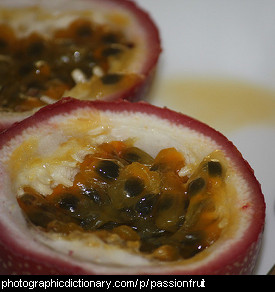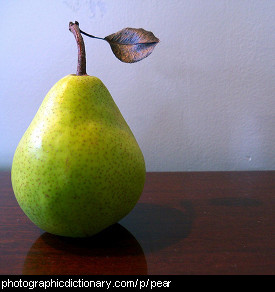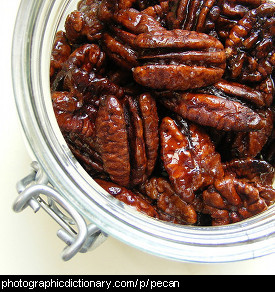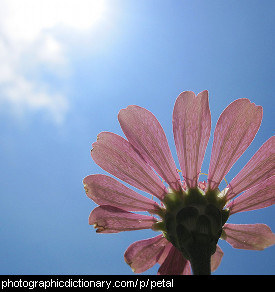Scientific name: family: arecaceae
There are many, many different kinds of palm tree. Most have one long trunk with a tuft of fronded leaves at the top. Some branch into a few stems. Palm trees usually grow in warm, wet areas of the world but are also found in deserts. They are not found in really cold places.
Some kinds of palm tree grow fruit that people eat, like the coconut palm and the date palm.
Scientific name: cyperus papyrus
Scientific name: Curly leaf: petroselinum crispum, Flat leaf: petroselinum neapolitanum
Parsley is a herb, which means it is not eaten as a food on its own, but it is added to other dishes for flavour. Parsley is used mostly as a garnish, cut up and sprinkled onto food to make it look nicer. You often find a sprig of parsley being used to decorate food from a restaurant.
Scientific name: pastinaca sativa
Pis forPassionfruit
Scientific name: passiflora edulis
Passionfruits are a small, tropical vine. The fruit itself is hard, and either yellow or almost black. The part of the passionfruit that you eat is the seeds and the flesh around the seeds. You cut the fruit in half and scrape the seeds out.
Passionfruit is added to pies, desserts, fruit salad and some drinks.
Scientific name: pyrus communis
The pear is the fruit of the pear tree. Pear trees are small deciduous trees growing to around 5-12 metres high. Pears may be green or yellow. Pears are closely related to apples but are softer, juicier and a different shape. You can eat all of the pear except the core in the middle, which is full of seeds.
Scientific name: carya illinoinensis
Pecans are the fruit of a kind of hickory tree, native to North America and Mexico. They have a rich taste, and are most commonly used in sweets and desserts.
Scientific name: diospyros kaki
Persimmons are an orange fruit with a sweet, tangy flavour. The variety most commonly grown is native to China. They must be completely ripe before they can be eaten, as the immature fruit is very bitter. They can be eaten fresh, dried, or used to make foods like desserts or even fermented to make vinegar.
The main variety now grown commercially and in home gardens in New Zealand is Fuyu. This is a non-astringent variety and is best eaten while it is still crisp - like an apple.













